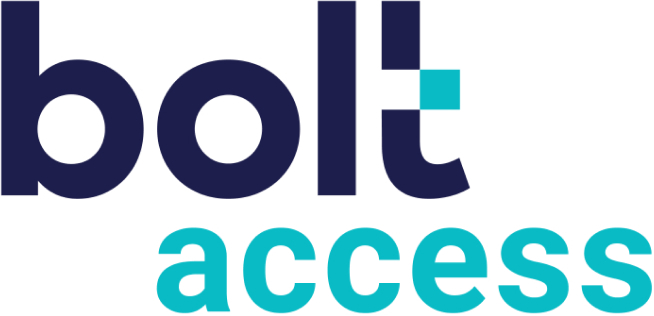
"
Insurance fraud is an ongoing issue. It’s something insurers have been contending with for literally hundreds of years.
Ever since the inception of insurance policies in the 18th century, people have searched for ways to exploit the system, explains P&C insurance expert, Hannah Smith. The Insurance Information Institute reports that fraud accounts for roughly 10 percent of incurred losses for the property/casualty insurance industry and three to 10 percent of total healthcare expenditures.
In terms of dollar value, $80 billion is a conservative estimate of how much is stolen through fraud annually, says the Coalition Against Insurance Fraud. With scammers getting increasingly clever and more sophisticated, there’s no limit to the damage they can do.
Insurance fraud is an issue independent agents need to be aware of and take measures to prevent. Here are details on the situation and steps you can take to fight this problem.
Insurance Fraud is on the Rise
Although insurance fraud is nothing new, there’s really been a spike in recent years. Separate data from the Coalition Against Insurance Fraud notes that reports of fraud have increased among companies between 2014 to late 2016. A large majority (61 percent) of respondents say that the number of suspected frauds increased slightly or significantly during that time, up 10 percent from a 2014 study.
Fraud can run the gamut and includes car accidents or damage, unnecessary medical procedures, enhancing storm damage and even faking death, writes the team at Business Insurance Quotes. And the consumer is who usually ends up paying for it.
“Insurance fraud impacts consumers by increasing premiums and the costs of consumers goods and services,” writes Tom Donahue, executive director of the Pennsylvania Insurance Fraud Prevention Authority. “The higher premiums are a result of insurance companies having to pass the costs of false claims — and fighting fraud — on to policyholders.”
It also creates real danger, he adds. Often, innocent people’s lives are endangered when accidents like vehicle crashes and homes being burned down are staged to make fraudulent claims.
Technology Improves Efficiency...
Technology has been a double-edged sword for the insurance industry. On one hand, it helps streamline many of the more arduous tasks and enables agents to provide a better customer experience.
For instance, tech writer, Chris Smith says technology has revolutionized the outdated claims process and greatly reduces human error. We’re now at the point where artificial intelligence can facilitate “touchless” claims that don’t require human processing.
It’s also been instrumental in creating a more personalized experience for customers. Digital technologies like chatbots, machine learning and cognitive services help customers move more seamlessly through the insurance buying process, have their questions answered and obtain customized quotes, explains Jacqui Griffiths at The Record.
...But it Comes at a Cost
On the other hand, technology creates some real concerns. Automated workflows are giving rise to new vulnerabilities for insurance companies, who might be exposing themselves to people who might defraud them out of money.
Arnaud Grapinet, chief data scientist at Shift Technology, says that automating claims greatly increases the threat of fraud. Through his company’s research and his own experience, Grapinet predicts the number of instances of fraud to at least double as more companies turn to bots to handle claims.
Fraudsters are well aware of the reliance companies have on automated technology and are actively looking for ways to exploit it. Knowing they’re dealing with a bot, a crooked policyholder may feel inclined to test out different versions of their claim statement until they find the perfect one where they can get coverage.
Even worse, this information often gets passed on, which encourages others to make the same type of claim, knowing the bot can be manipulated. Once a fraudster “cracks the system,” they’ll simply rinse and repeat.
The bottom line is that technology can be an asset to independent agents and improve operations. But it can also be a liability if they’re not careful.
How to Combat Rising Insurance Fraud
The data we’ve examined clearly shows that insurance fraud is a growing problem, and one that’s being compounded by technology. So what does this mean for independent agents? Is there anything that can be done?
Here are some tips.
Know What You’re Up Against
For starters, it’s important to know the relative level for fraud potential, explains DXC Technology. For example, a claim involving the disappearance of expensive jewelry would have a stronger likelihood of being fraudulent that something less expensive like a smartphone.
Having an idea what the fraud potential is for each type of claim is highly advantageous and allows agents to take swift action when something doesn’t seem right. Understanding which types of insurance fraud are most common is equally important.
According to Budget Insurance, car insurance fraud such as staged accidents, induced accidents and ghost accidents (those that never even happened) are popular among fraudsters. Home insurance fraud involving intentional damage, fake theft and overstating the value of stolen items is also quite common.
Look for “Suspicious Loss Indicators”
Journalist and editor Melanie Radzicki McManus says the National Insurance Crime Bureau has created a list of suspicious loss indicators. This is basically a list of red flag behaviors that show something could be amiss when someone reports a claim. A few examples including a person being incredibly calm and unemotional after submitting a large claim, submitting handwritten receipts for a repair or submitting a medical claim shortly after leaving a job.
This isn’t to say that every instance is fraud. In many cases, a claim is totally legitimate. It just means those claims with suspicious loss indicators should receive more attention than others. This comprehensive list from the NCIB contains indicators of staged and caused vehicle accident fraud, which can be helpful.
Use Fraud Detection Technology
Are you using AI to handle claims processing? If so, it’s vital that claim-handling bots integrate a robust fraud detection solution, says Grapinet. Bots should be powered with enough intelligence to compare multiple seemingly unrelated claims, in order to seek similarities. This will notify agents of any questionable claims that warrant further human inspection.
Data analytics can be a huge help. “By analyzing past fraud, insurers can use predictive modeling to produce what is called a ‘Suspicion Score,’ a value for the propensity of fraud,” explains the team at DXC Technology. “The process works like this: Adjusters simply enter data, and claims are automatically given a Suspicion Score to indicate the likelihood that a fraud has occurred.”
This takes a lot of the guesswork out of it and makes the process a lot less time-consuming.
Know Who You’re Hiring
Some agency owners think that insurance fraud is strictly limited to customers intentionally making a false claim or embellishing a minor one. But it doesn’t end there. Claims manager Beth Ossino points out that in some cases, fraudulent activity comes from within.
There are numerous instances where corrupt agents execute scams to make a profit. Ossino says one example is premium pocketing, where an agent will purchase coverage for a customer but simply pocket the money without actually insuring them. Another example involves altering financial documents and falsifying policy information to receive advanced sales commissions. This is something that recently landed an agent a two year prison sentence, writes insurance journalist Lyle Adriano.
There’s also “sliding,” where an agent tacks on extra coverage that a customer didn’t ask for, adds insurance writer Nathan Duke. This can potentially add hundreds of dollars to a premium, while the unscrupulous agent pockets the extra commission.
So, you certainly want to know how trustworthy a person is before bringing them onto your staff.
McManus says smart agencies will perform a comprehensive check into a person’s background. Besides looking for criminal activity, it’s a good idea to also run a credit check on potential employees. Sometimes, the individuals committing insurance fraud are the ones with with bad credit or other financial issues.
Stay on Top of Insurance Fraud Trends
Insurance fraud isn’t something that stays static. It’s a continual game of cat and mouse, where crooks are always devising new ways to outsmart insurers. Scammers are constantly evolving and becoming more sophisticated in their approach. So, it’s necessary for independent agents to stay on top of insurance fraud trends and be one step ahead of the game.
For example, fraud following natural disasters like floods, hurricanes and tornadoes is becoming a growing trend, insurance writer Stephanie K. Jones reports.
Professors Amir AghaKouchak and Farshid Vahedifard explain that the US has seen more billion-dollar natural disasters in recent years than ever before, with climate models predicting an increase in intensity and frequency in the future. And many people are now capitalizing on these events and using them to cash in on bogus claims.
Images by: zimmytws/©123RF.com, highwaystarz/©123RF.com, stockbroker/©123RF.com, andreypopov/©123RF.com
"
Talk to an expert
Contact us
